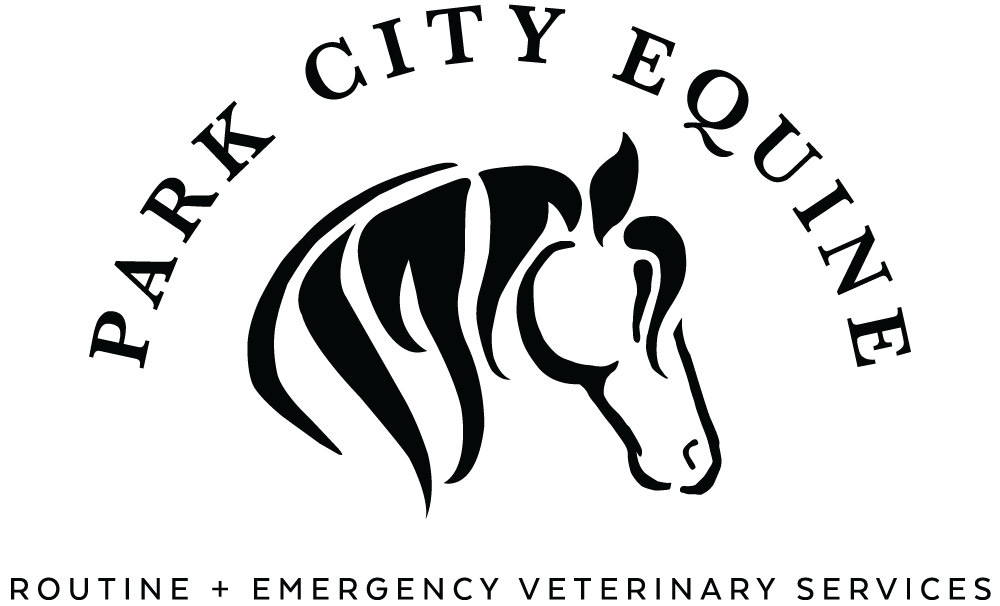Pregnancy in Horses
What to Expect When Your Horse Is Expecting
Are you eagerly awaiting the addition of a new foal to your stable? Familiarizing yourself with equine pregnancy basics can help you keep your mare healthy throughout the entire pregnancy.
The First 30 Days
An ultrasound examination can usually show evidence of pregnancy about two weeks after breeding or insemination. Pregnancy can also be confirmed by trans-rectal palpation performed at approximately 30 days. During trans-rectal palpation, your equine veterinarian inserts his or her arm into your horse's rectum and feels the cervix, ovaries, and uterus.
Keeping your horse healthy during the first month is particularly important, due to the 10 to 15 percent chance of pregnancy loss, according to the American Association of Equine Practitioners. Vigorous exercise, illness, stress, and uterine infections can cause spontaneous abortions (miscarriages). It's a good idea to schedule another ultrasound a month or two after the first one to confirm that your mare is still pregnant.
Is Your Horse Eating for Two?
Most horses can continue their usual diets during the first seven or eight months of pregnancy and only require minor feeding changes during the last three or four months. During those last months, you may need to increase feed amounts slightly and choose high-quality feeds, forage, and grains. Commercial feeds intended for pregnant mares can simplify the feeding process.
Although your horse may need a little more hay or forage, be careful not to overfeed. Overfeeding can cause fat deposits that narrow the birth canal or lead to laminitis, Aime Johnson, DVM, associate professor of theriogenology at Auburn University of Veterinary Medicine told Horse Magazine. Laminitis is a hoof disease that can be fatal in some cases.
What About Exercise?
Most mares don't need exercise restrictions after the first 30 days. You'll probably be able to ride your horse up until the eighth month of pregnancy. As the fetus grows, it may press against the horse's lungs, making breathing more challenging. Vigorous exercise may not be recommended during the final months of pregnancy, but your horse still needs to stay active. Hand-walking can help her meet her exercise needs.
Protecting the Mare's Health
These steps will help keep your horse healthy and reduce the risk of embryo resorption or abortion:
Provide access to an ample supply of clean water. Stagnant water may contain bacteria that could sicken the mare and the fetus.
House competition horses or other horses that travel often in another area of the stable. Separating these horses will prevent the spread of disease.
Ask your equine vet to update your mare's vaccinations and make deworming recommendations. These simple health measures protect the mare and the foal.
Schedule regular sessions with the farrier to prevent overgrowth of the hooves. Even if your horse isn't particularly active, regular trimming may still be needed.
Look for signs that foaling is approaching, including a swollen abdomen and enlarged udder. These signs usually occur about a month before delivery. If you see dried secretions on the udder, a few drops of milk, or notice that your horse's tail is higher than normal, birth may occur in a day or two.
Know When to Call the Veterinarian
After nearly a year of pregnancy, labor, and delivery proceed fairly quickly. In the first stage, your horse may seem agitated and struggle to find a comfortable position. During the second stage, the mare's water breaks, signaling that birth is imminent. Foals are usually born about 30 minutes after the water breaks.
The amniotic fluid should be clear yellow. If it's brown, let your veterinarian know, as this could mean that the foal has inhaled meconium. Meconium is the first stool produced by the foal. If it's inhaled, pneumonia can threaten the newborn's health.
Call the equine vet if stage one takes more than two hours, the placenta isn't expelled within an hour of the birth, or if you don't see any signs of an emerging foal after 15 minutes during stage two. Normally, you should see two hooves and the head. If you see any other combination or notice that a hoof is protruding from the mare's anus, let the vet know immediately.
Is your horse pregnant? Regular veterinary care can increase the chances of a healthy pregnancy. Contact our office to schedule an appointment for your horse.
Sources:
The Horse: Managing Pregnant Mares, 5/15/20
EquiMed: Horse Gestation Timeline, 5/717
University of Minnesota Extension: Caring for Your Mare During Breeding and Foaling

